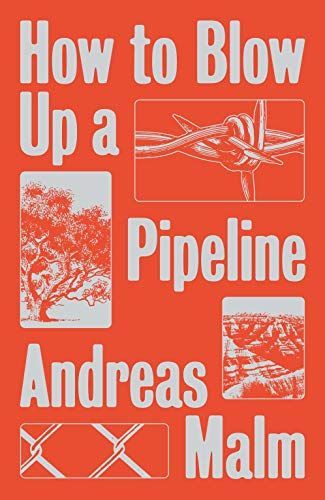
How to Blow Up a Pipeline
Property will cost us the earth The science on climate change has been clear for a very long time now. Yet despite decades of appeals, mass street protests, petition campaigns, and peaceful demonstrations, we are still facing a booming fossil fuel industry, rising seas, rising emission levels, and a rising temperature. With the stakes so high, why haven't we moved beyond peaceful protest? In this lyrical manifesto, noted climate scholar (and saboteur of SUV tires and coal mines) Andreas Malm makes an impassioned call for the climate movement to escalate its tactics in the face of ecological collapse. We need, he argues, to force fossil fuel extraction to stop--with our actions, with our bodies, and by defusing and destroying its tools. We need, in short, to start blowing up some oil pipelines. Offering a counter-history of how mass popular change has occurred, from the democratic revolutions overthrowing dictators to the movement against apartheid and for women's suffrage, Malm argues that the strategic acceptance of property destruction and violence has been the only route for revolutionary change. In a braided narrative that moves from the forests of Germany and the streets of London to the deserts of Iraq, Malm offers us an incisive discussion of the politics and ethics of pacifism and violence, democracy and social change, strategy and tactics, and a movement compelled by both the heart and the mind. Here is how we fight in a world on fire.
Reviews
aisha@aishas
Tom Lawlor@heretobotheryou
ben wolfson@birdbrain10
Bryan Alexander@bryanalexander
Nikolas Matt@niki_01
Nienke Timmermans@nino244
Rebecca Lum@reblum
jami welch@jami
ame @sunflowertheft
alice browne@alicebrwne
Anas A@kenkitano
Izzy@izzystardust
Angelo Zinna@angelozinna
Mark Stenberg @markstenberg3
Nicholas Hanemann@nick_h
Celine Nguyen ✿@celinenguyen
Highlights
Rebecca Lum@reblum
Page 103
Rebecca Lum@reblum
Page 100
Rebecca Lum@reblum
Page 73
Rebecca Lum@reblum
Page 71
Rebecca Lum@reblum
Page 70
Rebecca Lum@reblum
Page 70
Rebecca Lum@reblum
Page 50